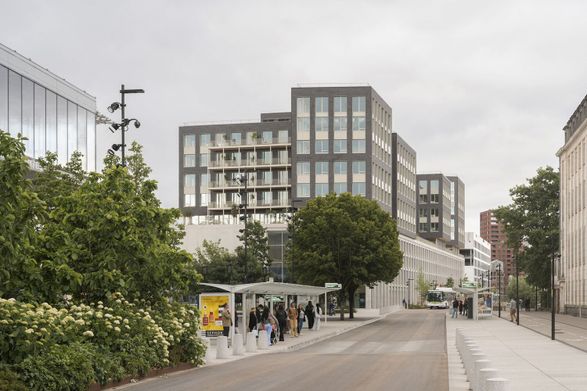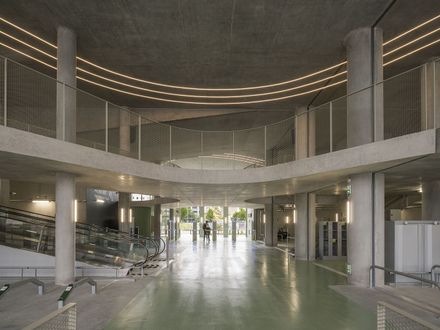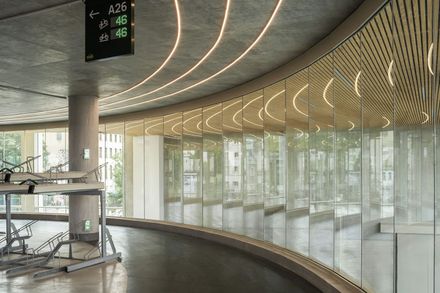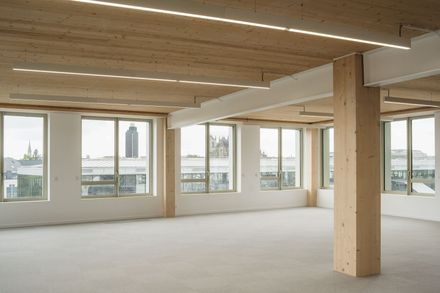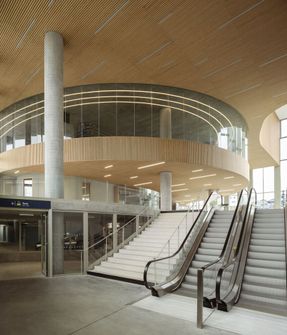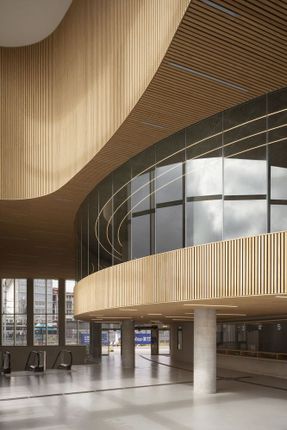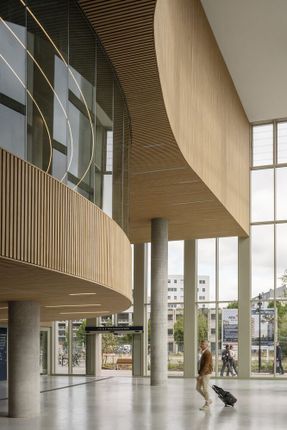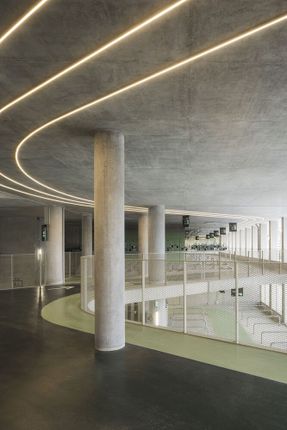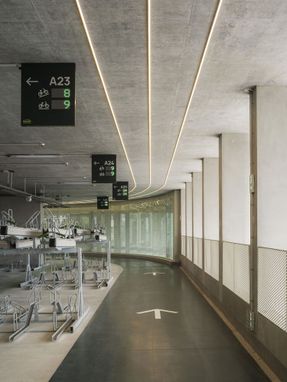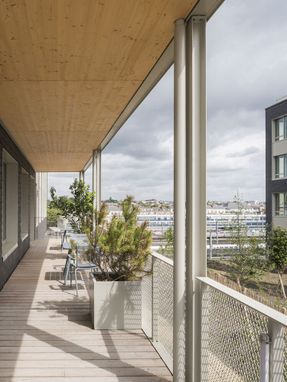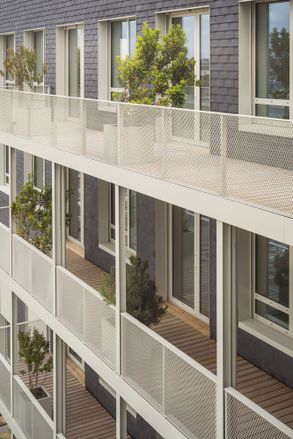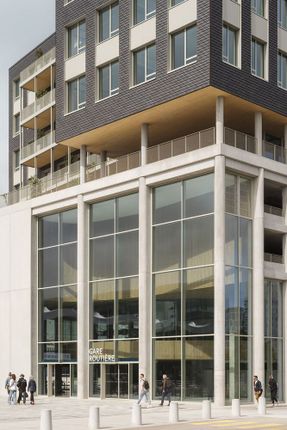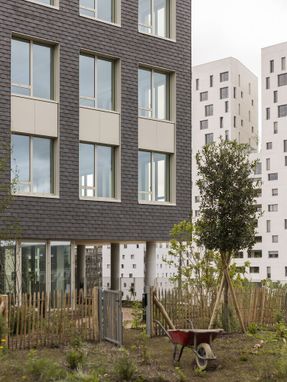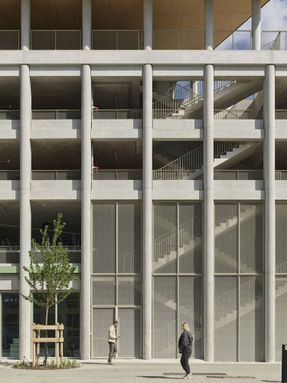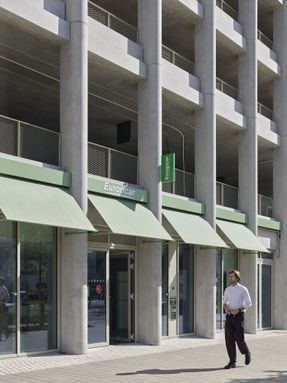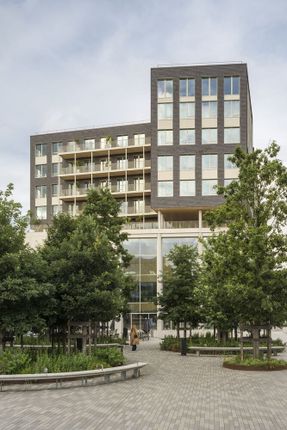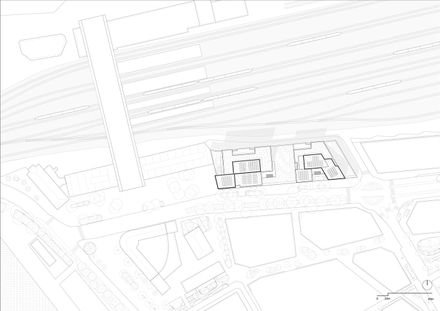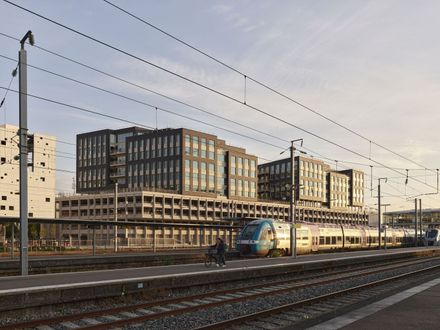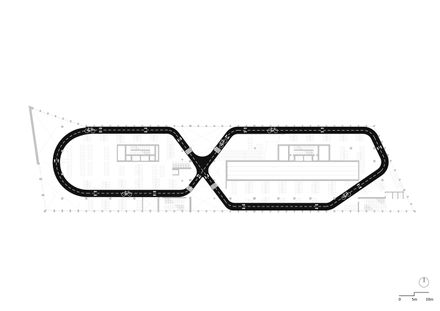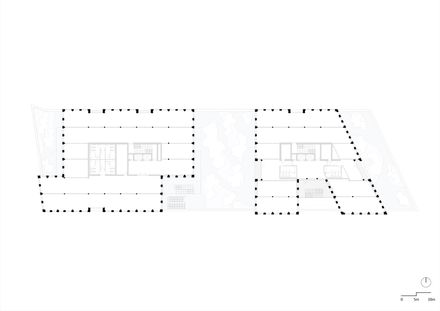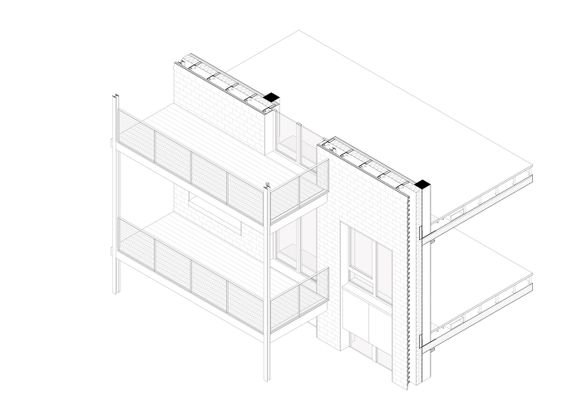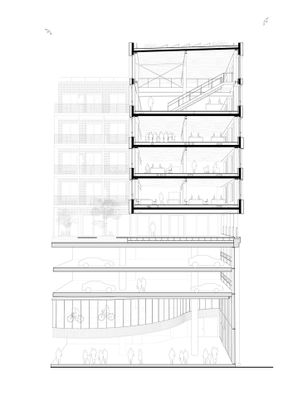
Multimodal Hub and Offices
ARCHITECTS
AIA Life Designers, DREAM
GENERAL CONTRACTORS
ETPO, André BTP
ENGINEERING TEAM
AIA Ingénierie, AIA Environnement, Zéphyr paysage, Gamba, NAMIXIS
TIMBER COMPANY
Briand Bois
DESIGN TEAM
DREAM, AIA Life Designers
CLIENTS
Nantes Métropole Aménagement Bati-Nantes
MANUFACTURERS
Terreal, Aluvair, Baumannhueppe, Marca corona, Piveteau bois, Polytech, SOLTIS, Tarkett, Wicona
PHOTOGRAPHS
Cyrille Weiner, Stéphane Chalmeau
AREA
24150 m²
YEAR
2025
LOCATION
Nantes, France
CATEGORY
Transportation, Office Buildings
English description provided by the architects.
A NEW URBAN LANDMARK
Renowned for its quality of life, Nantes stands out for its attractiveness and strikingly consistent growth.
As the leading metropolis in Western France, the city is gradually reshaping its contours to meet the needs and aspirations of the times.
Located in the immediate vicinity of the new Nantes train station, the Multimodal Hub and its offices are part of the dynamic metamorphosis of the district.
This new architectural complex symbolizes the link between the historic districts to the north and the new Euronantes district to the south, as part of the major urban renewal project being carried out throughout the city.
Conceived as a new urban landmark in the district's transformation, the project brings together mobility infrastructures and the headquarters of two local companies: Lucca and Lhyfe.
Jointly managed by Nantes Métropole Aménagement and Bati-Nantes, the complex is connected to the public space by its location adjacent to the train and bus stations, and houses one of the largest bicycle parks in France, with a capacity of 1,470 spaces.
Designed jointly by DREAM and AIA Life Designers, the project is being built by a consortium of local companies headed by ETPO (leader), alongside ANDRE BTP and BRIAND BOIS.
A VERTICAL MIX OF USES
Rising over nine levels - four for the Multimodal Hub, five for the offices - the complex is supported by a structure that provides a simple response to a complex program.
Its design is based on clear principles: user-friendliness, easy access, sober volumes, and strong environmental ambitions.
The choice of a vertical layout limits the amount of floor space required, encouraging space-saving urban development. Accessible to all, the building is open on all sides.
Ramps, escalators, moving walkways, staircases, and freight elevators create a fluid, inclusive circulation system.
Illustrating the changes of our times in terms of mobility, sustainable development, the quest for well-being in the workplace, and more broadly, in urban space, the building evokes, in its own way, a permanent movement, the sack and surf of those who cross it.
It prefigures tomorrow's architectural challenges, and as such, offers the reversibility to keep pace with societal evolutions. The project's architecture is an expression of the city in motion.
OPENING UP PROGRAMS
The Multimodal Hub is based on a concrete post-and-beam structure with long spans, which frees up space, allows great flexibility in layout, and encourages visual porosity.
By creating connections between levels and links between different uses, the project decompartmentalizes programs and offers a fluid, intuitive experience. Its curved lines and large bay windows offer an open, generous architecture, directly linked to the public space.
On the first floor, the bus station, with its concourse and shops, opens directly onto the forecourt and platforms. From the lobby, the glass mezzanine showcases the emblematic element of the project: the "Grand 8" loop of the bicycle parking area with its circulatory spaces. Two other levels house a car rental park.
A STRONG DOMESTICITY
Located on top of the multimodal hub and accessible via separate lobbies, the offices open onto outdoor spaces that naturally extend the workplaces. These breathtaking spaces encourage informal exchanges, shared breaks, and porosity between indoors and outdoors. Away from traditional tertiary codes, the raw materials - wood, terracotta tiles, plants - instill a warm, domestic atmosphere that invites you to make the premises your own.
Exterior circulation encourages movement and reinforces spontaneous interaction, creating a living, permeable architecture that echoes the dynamics of the site.
A MANIFESTO FOR VISIBLE WOOD
Inside, the offices are a veritable manifesto for visible wood. DREAM's expertise in timber construction is deployed here, with a solid wood structure and CLT floors left visible, without false ceilings.
All networks - ventilation, fluids - are integrated into a technical floor, freeing up volumes and revealing the wood. Here, raw materials embody a radical minimalism and an assumed frugality.
The softness of wood creates a warm atmosphere conducive to well-being. The luminous, naturally ventilated, and modular floor plates offer great freedom of use and configuration.
A Collective Rooftop Garden — Twelve meters above ground, a 1,690 m² hanging garden offers a veritable island of coolness, overlooking the city and opening up unparalleled views of the station, the Jardin des Plantes, and the rooftops of Nantes.
Located between the two units, it harmonizes the two programs: public amenity and tertiary.
This large-scale communal space offers the two Nantes-based companies housed in the offices a place of conviviality conducive to informal exchanges and shared uses.
The 3,700 m² of green spaces - roofs, walkways, garden - play an active role in the building's thermal comfort, helping to reduce temperatures through evapotranspiration from the plantations.
In addition to their positive role for biodiversity, green spaces are a promise of encounters, reminding us of the pleasure of a walk and the benefits of physical exercise. By using regional varieties and local rocks, they also reflect the Ligerian codes that are the hallmark of Nantes.
OFF-SITE CONSTRUCTION
The project involved a significant amount of off-site construction. This approach met the major challenges of planning, quality, and space optimization in a constrained environment.
Timber-framed facades with joinery and laminated wood structure entirely prefabricated at the Briand Bois plant in Verrières-en-Anjou (49).
*CLT manufactured by the Piveteau bois plant in Sainte-Florence (85); *10,800 m² wood-frame construction; *8 months of wood-frame construction; *Prefabricated concrete columns.


